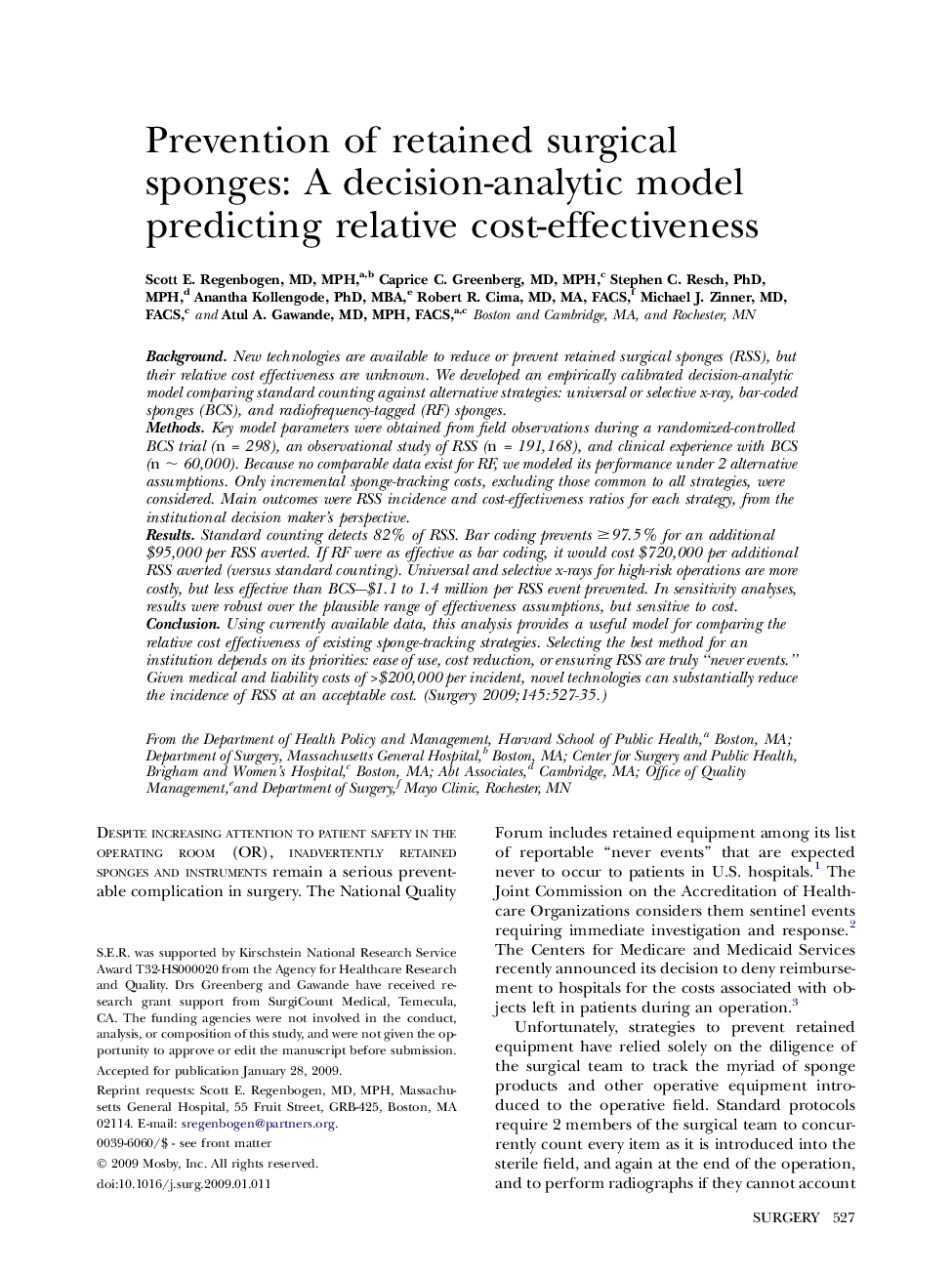| کد مقاله | کد نشریه | سال انتشار | مقاله انگلیسی | نسخه تمام متن |
|---|---|---|---|---|
| 4309080 | 1289300 | 2009 | 9 صفحه PDF | دانلود رایگان |

BackgroundNew technologies are available to reduce or prevent retained surgical sponges (RSS), but their relative cost effectiveness are unknown. We developed an empirically calibrated decision-analytic model comparing standard counting against alternative strategies: universal or selective x-ray, bar-coded sponges (BCS), and radiofrequency-tagged (RF) sponges.MethodsKey model parameters were obtained from field observations during a randomized-controlled BCS trial (n = 298), an observational study of RSS (n = 191,168), and clinical experience with BCS (n ∼ 60,000). Because no comparable data exist for RF, we modeled its performance under 2 alternative assumptions. Only incremental sponge-tracking costs, excluding those common to all strategies, were considered. Main outcomes were RSS incidence and cost-effectiveness ratios for each strategy, from the institutional decision maker's perspective.ResultsStandard counting detects 82% of RSS. Bar coding prevents ≥97.5% for an additional $95,000 per RSS averted. If RF were as effective as bar coding, it would cost $720,000 per additional RSS averted (versus standard counting). Universal and selective x-rays for high-risk operations are more costly, but less effective than BCS—$1.1 to 1.4 million per RSS event prevented. In sensitivity analyses, results were robust over the plausible range of effectiveness assumptions, but sensitive to cost.ConclusionUsing currently available data, this analysis provides a useful model for comparing the relative cost effectiveness of existing sponge-tracking strategies. Selecting the best method for an institution depends on its priorities: ease of use, cost reduction, or ensuring RSS are truly “never events.” Given medical and liability costs of >$200,000 per incident, novel technologies can substantially reduce the incidence of RSS at an acceptable cost.
Journal: Surgery - Volume 145, Issue 5, May 2009, Pages 527–535